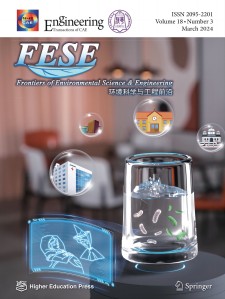Front Cover Story (See: Lizheng Guo, Xinyan Xiao, Kassim Chabi, Yiting Zhang, Jingjing Li, Su Yao, Xin Yu, 2024, 18(3): 35)
Viable but non-culturable (VBNC) bacteria, colloquially referred to as “The sleeping beauty”, have been detected in source water and effluent of drinking water treatment processes, leading to significant underestimation of viable cell counts. Limited information exists on VBNC bacteria in tap water, particularly in public places. To address this gap, a comprehensive nine-month study was conducted in a major city in south-eastern China. Forty-five samples were collected from five representative public places (railway station, campus, hospital, shopping mall, and institution). The findings revealed that opportunistic pathogens such as E. coli, E. faecalis, P. aeruginosa, Salmonella sp., and Shigella sp. were primarily detected as VBNC cells, with concentrations ranging from 1.03 × 100 to 3.01 × 103, 1.20 × 100 to 1.42 × 102, 1.32 × 100 to 8.82 × 100, 1.00 × 100 to 6.71 × 101, and 2.07 × 100 to 1.93 × 102 cell equivalent/100 mL, respectively. This study provides quantitative insights into the occurrence of VBNC bacteria in tap water and highlights the need to enhance tap water safety in public locations.













 京公网安备 11010502051620号
京公网安备 11010502051620号




